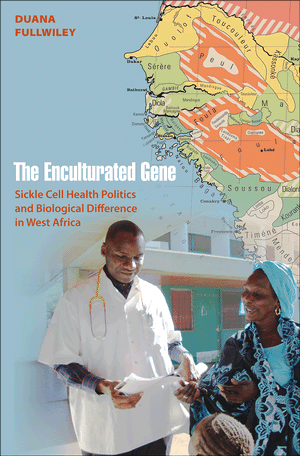Cultural encounters and hyphenated peoplePosted in Articles, Media Archive, Oceania, Social Science on 2011-11-22 00:18Z by Steven |
Cultural encounters and hyphenated people
The Journal of the European Association of Studies on Australia
Volume 1, 2009
pages 97-107
ISSN 1988-5946
Anne Holden Rønning, Professor Emerita
University of Bergen, Norway
Cultural encounters are a dominant feature of contemporary society. Identities are ever-changing ‘routes’ as Hall and others have stated, so we become insiders and outsiders to our own lives. The manifaceted expression of cultural belonging and its formation is illustrated by examples from Australasian writers who express not only the conflict of belonging to more than one culture, but also its inherent value. Such writers provide the reader with alternative ways of reading culture and illustrate the increasing trend to see ourselves as hyphenated people belonging nowhere specific in a globalised world.
In the move from a colonial to a post-colonial, multicultural, and transnational society critics have spoken of identity, identities, pluralism and hyphenated peoples. Globalization and extensive migration in the late twentieth and early twenty-first centuries have increased encounters between cultures and raised further questions of integration and assimilation. Matthews has defined culture as “the information and identities available from the global supermarket” (27). He sees culture as hyphenating in our materialistic society since the cultural supermarket, dominated by the mass media, leaves the ability to appropriate culture in an adequate manner socially to the individual rather than the group.
If we consider the manifaceted expression of cultural belonging and its formation, two of the most common encounters are linguistic and cultural, expressed in texts of different kinds in art, music, literature, or drama. The themes of many recent EASA conferences have underlined this aspect of Australian studies, from pluralism at the first conference, to maintaining the national, re-visioning, remembering, re-invention of itself, and translating cultures, to mention just some. In art, for example, this has been demonstrated by papers on the use of palimpsest in Japanese-Australian pottery, a fascinating picture of sculptures and vases with half Chinese and half Australian motifs. On another occasion it was shown how older colonial Australian landscape paintings were painted over, or had new features imposed on them by indigenous painters—for example, barbed wire, different indigenous signs—thus subverting and reclaiming the land. And, of course, literature has provided a plethora of examples of cultural encounters at all conferences. Brydon and Tiffin think of this kind of “cross-cultural interaction” in terms of flora, comparing it to a rhizome which spreads its roots out and shoots up in other places, yet retains its contact with the centre (1993, 12), symptomatic of the diversification of cultures and identities…
…Hyphenated people
Though the word ‘hyphenated’ has often been thought of in negative terms, in today’s society it is increasingly thought of as positive, indicating multiculturality—since the days of homogeneity of race are long gone. However, recently when speaking of this I have been met with a sense of derision—another attempt to make oneself different, another labelling. But are we not all hyphenated in some way, the two parts intertwined? An understanding of this could lead to a world less full of conflicts. Bhahba has discussed what happens when cultures meet, historically from the point of view of colonization, and today with immigration as the site for such exchange. He describes “[h]ybridity [as] a fraught, anxious and ambivalent condition. It is about how you survive, how you try to produce a sense of agency or identity in situations in which you are continually having to deal with the symbols of power or authority” (THES 1999). But he also acknowledges the mix of cultures he himself represents in this ironic description of himself as Mr. Hybrid: “The very process of colonization shifts certainties and sureties. It exposes the fictionality of certain ideas that are seen to be universal. (…) Hybridity is like the way I’m dressed – Indian jacket, silk scarf, corduroys and a collarless shirt from Italy. There you are, Mr. Hybrid” (THES 1999)
The hyphenated person retains parallel cultures, both influencing the other but yet remaining separate. This is most clearly seen in migrant and settler communities, but is equally relevant for all who no longer live in their so-called ‘country of origin’. Trinh-Minh-Ha, the American Vietnamese film critic, has written much on these issues as she sees film as a particular example of cross-cultural encounters both in viewer and maker as well as in text and performance. She envisages such encounters as often resulting in a bricolage, a pastiche, quoting Scott Momaday: “We are what we imagine. Our very existence consists in our imagination of ourselves (…) The greater tragedy that can befall us is to go unimagined” (‘Out There’ cited in Minh-Ha 8). For those migrating or of mixed racial and ethnic parentage literature has always had a vital role to play in disseminating and problematizing issues of hyphenation, from the time of Shakespeare’s Caliban onwards. In When the Moon Waxes Red Trinh Minh-Ha uses the moon as a symbol of the constant and yet the changing, and therefore I would suggest symbolic of how cultural encounters function. The title of the book refers to a belief in Chinese mythology that a red moon is a portent of coming calamity—the eclipse as dangerous. Just as the moon waxes and wanes, yet retains its form, so do our identities vary according to time and place, and the cultural encounters we meet…
Read the entire article here.


